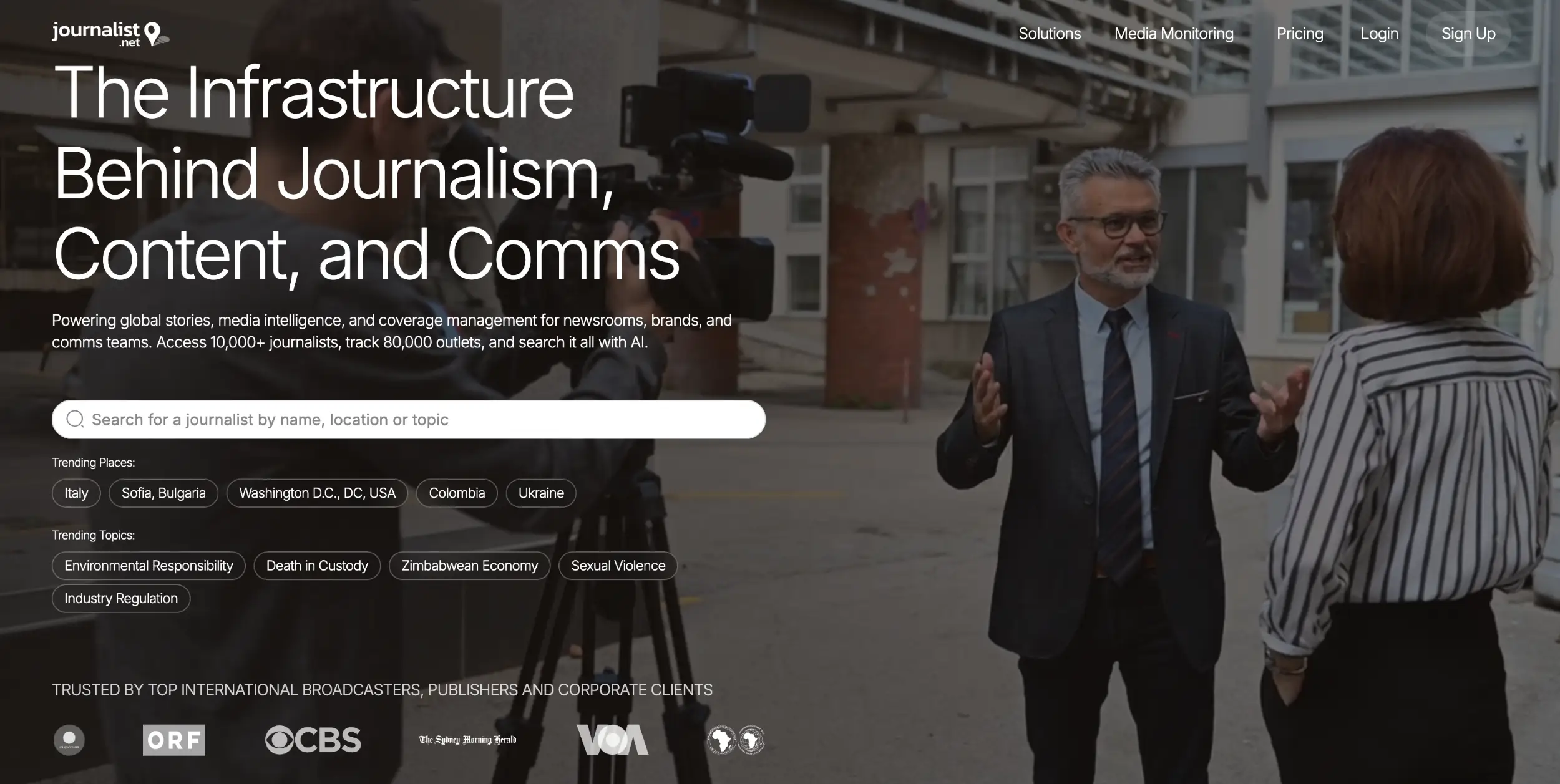Your Travel Insurance Is A Dangerous Fantasy

When a journalist tells us they have "travel insurance" for their assignment to a conflict zone, we know they're operating under a potentially fatal illusion.
Most insurance products available today are simply unsuited to the work done by media professionals. They're designed for the standard requirements of the travelling public.
Not for someone who might need extraction while under fire.
The Moment Reality Hits
Standard travel insurance works fine if you break your leg in Paris. It fails catastrophically when you're besieged in a city under sudden attack.
The difference becomes brutally clear in specific scenarios that journalists face regularly.
When armed factions target foreign media, your standard policy won't help. When borders close without warning and there's an imminent threat to foreigners, you're on your own. When you face kidnapping or politically motivated detention, that travel insurance becomes worthless paper.
We've seen the consequences firsthand. Colleagues trapped under fire while policy documents debate whether their crisis "counts." The case of Samer Abudaqa in Gaza illustrated this perfectly.
Bleeding, pinned down by bombardment, with rescue teams unable to reach him because there was no clearance, no political will, and certainly no insurance plan that could cut through the red tape of war.
Six Critical Coverage Gaps
Standard travel insurance fails journalists in six fundamental ways.
First: FCDO Exclusions. Most policies explicitly exclude cover for travel to regions where the Foreign, Commonwealth & Development Office advises against "all but essential" or "all" travel. This leaves professionals operating in these regions without essential protection, including medical, repatriation, and personal accident cover.
Second: War and Terrorism Exclusions. Standard policies routinely exclude claims arising from war, civil unrest, and acts of terrorism. If an incident occurs in a conflict area, professionals cannot make successful claims for injury, death, or equipment loss.
Third: Limited Emergency Evacuation. Emergency evacuation, including non-medical evacuation due to deteriorating security, is often not included or extremely limited. Journalists in conflict areas may require rapid extraction due to armed conflict, kidnapping, or 'boots on the ground' security situations.
Fourth: Activity Exclusions. Routine business travel insurance seldom covers frontline journalism, disaster relief, or humanitarian operations. Standard policies limit or exclude activities considered "high risk" even when they're core to the professional's mission.
Fifth: No Kidnap and Ransom Coverage. In areas affected by extreme instability, there's higher-than-average risk of kidnapping, ransom demands, and politically motivated detentions. These scenarios are virtually never covered by standard insurance.
Sixth: Pre-existing Warnings. If threats are already present or listed in official government travel warnings at booking time, virtually all standard policies decline subsequent claims for cancellations, interruptions, or emergencies attributed to those events.
The Human Cost of Inadequate Coverage
2024 marked the deadliest year for journalists in three decades of record-keeping, with at least 124 journalists and media workers killed.
Among them, 43 freelance journalists died while working, often without access to protective equipment, security guards, or comprehensive insurance coverage.
One journalist shared their experience with us, though we protect their identity as they often work in areas where they're not supposed to be reporting.
"For years, I carried the illusion that 'insurance' meant safety. That illusion shattered the first time I found myself in real danger, not because of a hospital slip or car crash, but because of what I do: bear witness to war."
"Standard insurance isn't just inadequate. It's a fantasy for journalists like me."
The psychological impact is devastating. You're already running on adrenaline, exhaustion, and grief. The knowledge that you're also on your own if things go truly wrong eats at you.
Some become paranoid, others reckless. Many start censoring themselves, avoiding the most dangerous stories because the cost of getting it wrong isn't just professional.
It's existential.
What Specialized Coverage Actually Provides
The difference between standard travel insurance and specialized journalist coverage is the difference between mere transportation and tailored survival.
We work with partners like Northcott Global Solutions to provide what journalists actually need in crisis situations.
Medical treatment and extraction even while under fire or direct threat. Not just an ambulance ride, but extraction from active combat zones.
Security personnel to get you out. Not just to a hospital, but to the safest possible territory or onward to home.
Multi-jurisdictional coordination using proven, trusted local assets. Even where official rescue can't or won't operate.
Real-time scenario management. Adapting flight routes, coordinating secure convoys, managing evacuation through non-standard exit points when needed.
Specialized coverage recognizes that "emergency" doesn't always mean "medical." Politics, violence, and bureaucracy are part of the risk landscape.
The Economics of Real Protection
Comprehensive journalist insurance and the price of real protection versus the illusion of standard coverage are poorly understood but a quote can be obtained in under a minute and at least the options understood.
The cost difference reflects the reality of what's actually covered. Standard policies work for tourists and business travelers in stable environments.
They fail completely for professionals operating in conflict zones.
The Hidden Vulnerability of Citizen Journalists
The rise of citizen journalists and social media documentarians creates new challenges. These aren't traditional war correspondents with newsroom backing and safety training.
Someone with a smartphone and social media following who decides to document a conflict zone faces even greater vulnerability than seasoned journalists.
Fewer journalists than you might think have proper safety training. Most rely on hope and luck. Many with only basic training or field knowledge expose themselves to danger regularly.
They're not always members of big media networks or well-funded organizations.
This makes specialized coverage even more critical for independent operators who lack institutional support.
How Information Actually Spreads
Critical safety information for journalists spreads through informal networks rather than public channels.
Journalists communicate face-to-face, on Telegram, and through private channels. Seldom in the public eye or on professional platforms like LinkedIn.
This creates a knowledge gap. The most vital information about what coverage actually works when everything goes wrong remains hidden in private conversations.
Many of our clients come from recommendations of users who've had cause to rely on us and our partners. Word spreads through experience, not marketing.
But this informal network means many journalists operate without understanding the true extent of their vulnerability.
Why We Do What We Do
We find that writing content and social media coverage helps people understand why what we offer is different.
Our approach stems from a simple principle: insurance designed by journalists, for journalists.
Unlike non-specialist insurers, we work hard to keep our list of exceptions to a minimum. We understand that comprehensive cover means journalists can focus on their crucial work rather than worrying about coverage gaps.
Our policies support journalists' efforts and enable them to carry out vital work with genuine peace of mind.
We work with journalists, media professionals, and industry organizations across the globe. Our comprehensive and affordable insurance goes beyond simply providing cover for journalists and media professionals working abroad.
It also meets media organizations' duty-of-care responsibilities for the people they employ locally.
The Choice Every Journalist Faces
Journalists choose 'cheap' travel insurance only until they find that their life may depend on its effectiveness.
That moment of realization changes everything. When you call for help and hear, "Sorry, that's not covered," you don't just feel abandoned.
You feel invisible. You are no longer a person; you are a "risk category," an "exclusion," a "policy void."
The sickening realization that the lifeline promised by your policy suddenly evaporates because your crisis isn't a "travel accident" but a war crime, a siege, a kidnapping attempt.
Standard insurance will leave you stranded the minute your situation falls outside a tightly defined, non-hostile, non-political medical emergency.
What Real Protection Looks Like
If your work takes you into complex or volatile territories, don't rely on standard coverage.
Engage with specialist providers who understand that journalists need extraction in the middle of a firefight, not just an ambulance ride.
Who know that politics, violence, and bureaucracy are part of the risk landscape.
The difference between mere transportation and tailored survival isn't theoretical. It's the difference between coming home in one piece and becoming another statistic.
Specialist insurance for journalists, media professionals, and the local people they work with operates anywhere in the world. Including conflict zones where standard policies explicitly exclude coverage.
Our tailor-made cover for journalists and media professionals working globally provides the flexible and comprehensive protection they need.
So they can focus on their crucial work of bearing witness to the world's most important stories.
Don't wait for that moment of abandonment to teach you the lesson. Insist on insurance that matches the world you're covering.
Not the sanitized version sold to tourists and business travelers.



